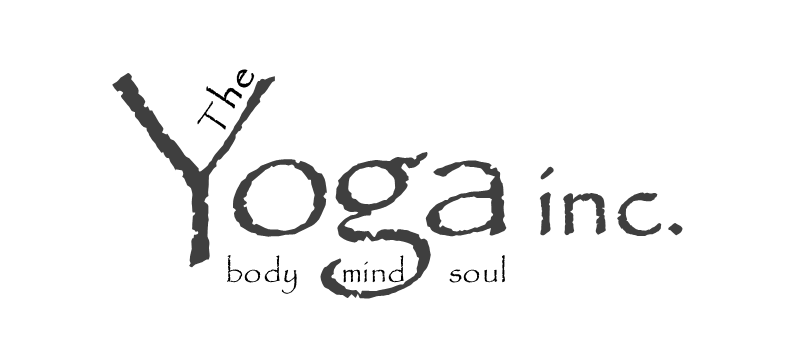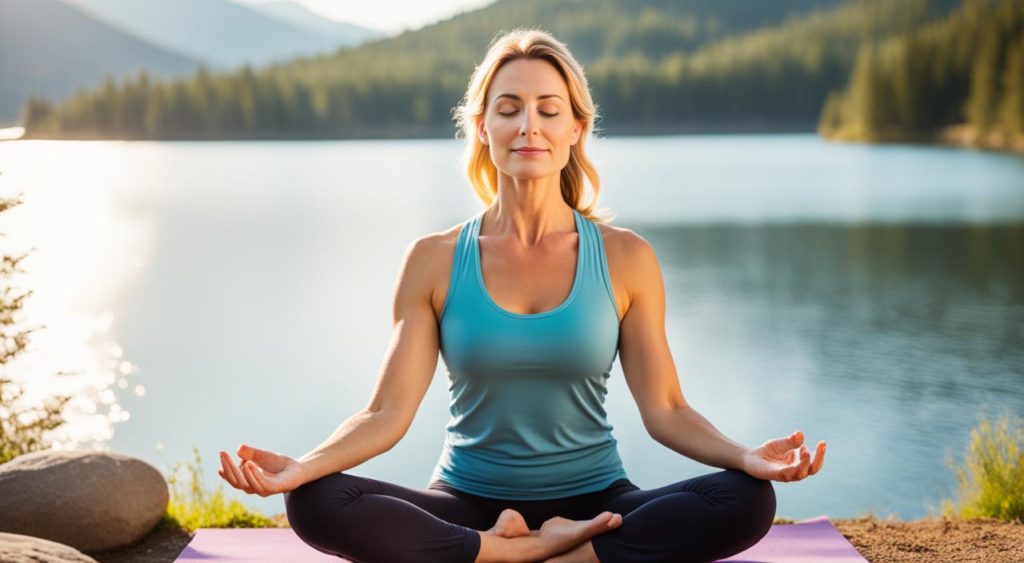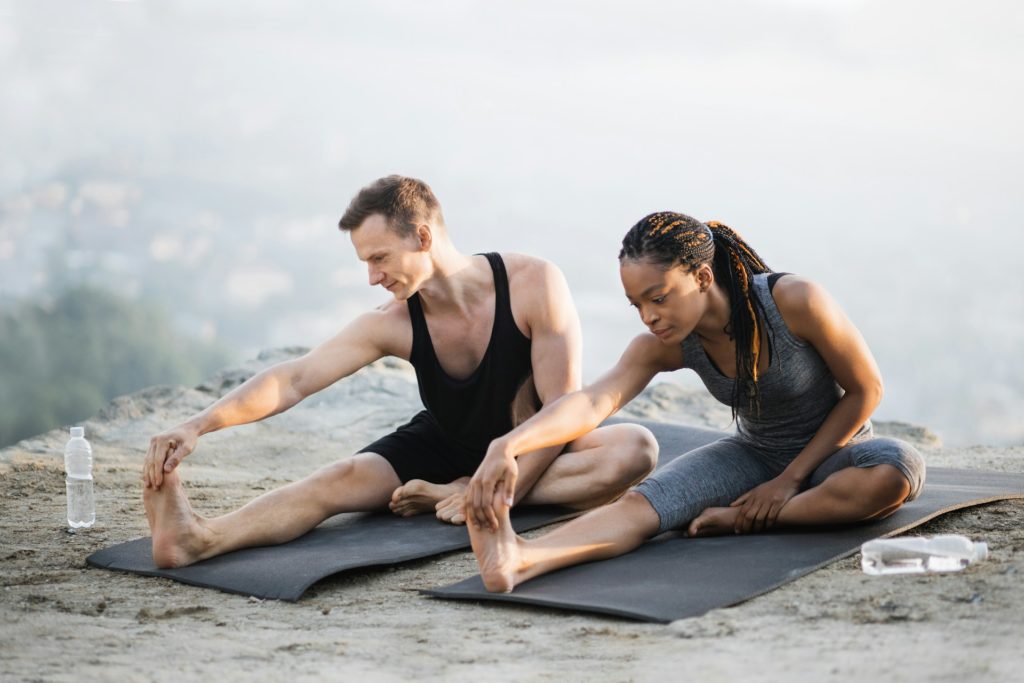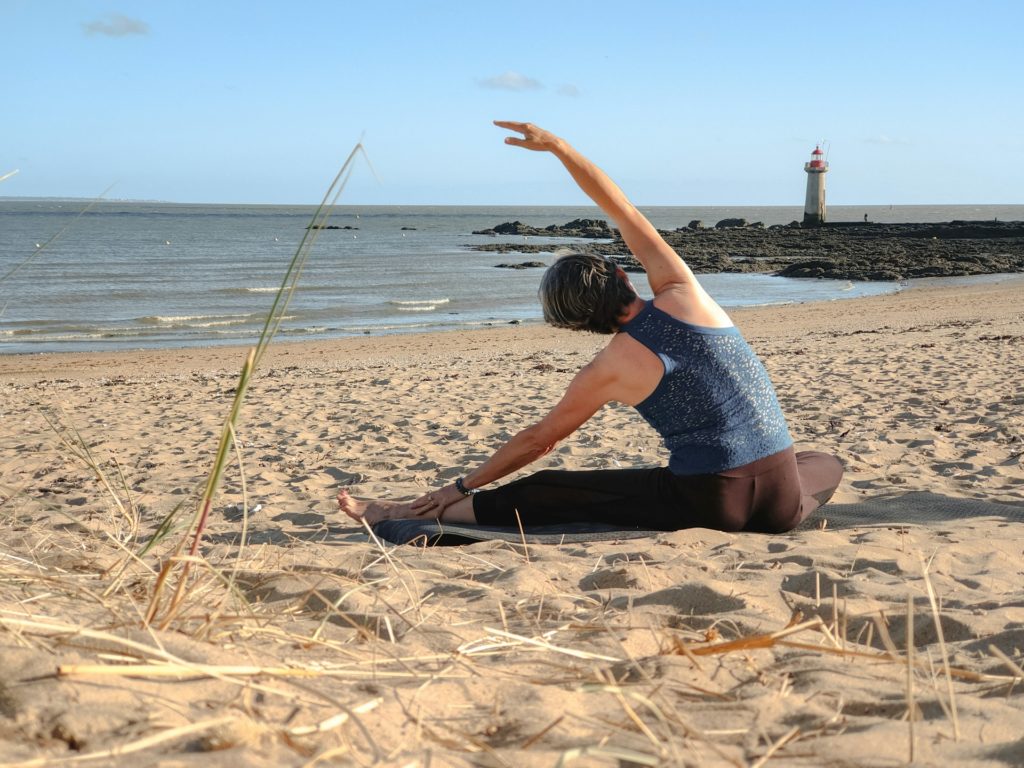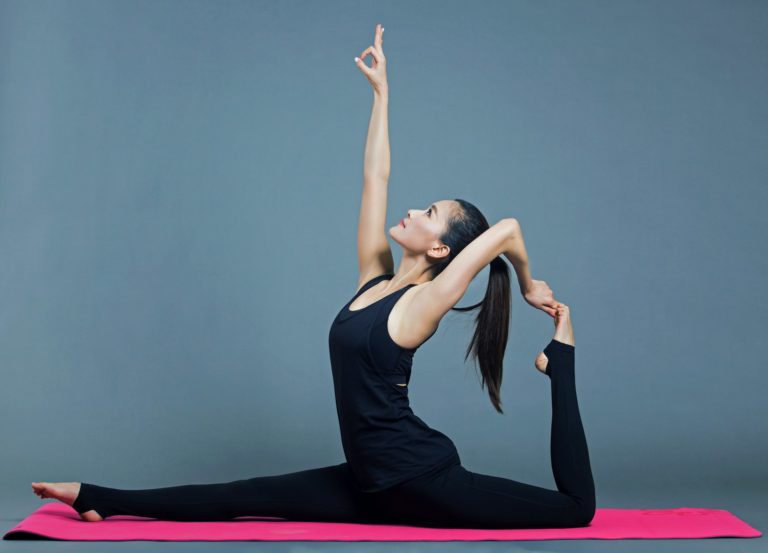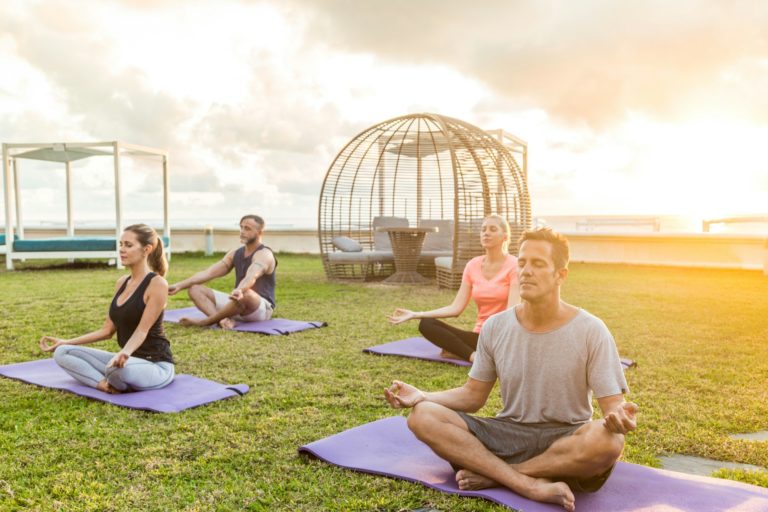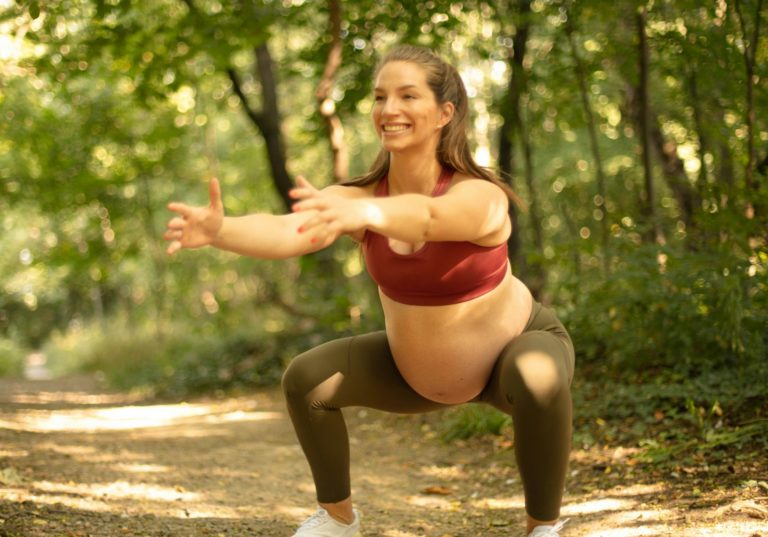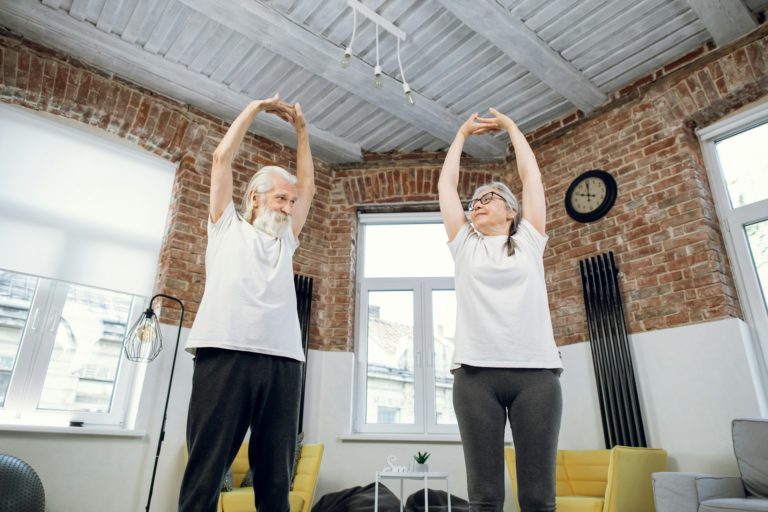Exploring the Benefits of Hatha Yoga
Picture an early morning, the first rays of sunlight streaming through an open window, casting a warm glow on a tranquil space. Amid serene silence, someone unfurls a yoga mat with a sense of purpose there. That someone could be anyone—perhaps a busy parent seeking a moment of calm before the day begins or an office worker aiming to find balance amidst the hustle. They all share a common intention: to experience the essence of Hatha Yoga and embrace its myriad benefits for mind and body.
What is Hatha Yoga? It is a gentle introduction to yoga that promises a grounded and centered life. Its slow-paced practice can transform a mere exercise routine into a holistic journey toward wellness. Through this ancient discipline, one connects deeply with one’s breath, cultivates physical resilience, and fosters a peaceful mental state. The benefits of Hatha Yoga manifest in limber muscles, a focused mind, and an awakened spirit, fully equipping practitioners for the ebb and flow of daily life.
Key Takeaways
- Begin your day centered and balanced with Hatha Yoga’s calming practices.
- Discover strength and flexibility through the mindful Hatha Yoga positions.
- Experience mental clarity and stress relief integral to the Hatha Yoga benefits.
- Learn how the benefits of Hatha Yoga merge physical exercise with spiritual refinement.
- Embrace the holistic approach of Hatha Yoga for beginners for comprehensive mind and body well-being.
The timeless practice of Hatha Yoga positions has its genesis entwined with the profound essence of Hinduism, where it’s revered not merely as a form of physical exercise but as a journey towards spiritual awakening. This ancient system was created to harness the energies of the sun and moon—referred to in Sanskrit as “ha” and “tha”. Respectively—to establish a state of balance and calm. A deeper look into the hatha yoga definition reveals its dual purpose as a means for physical wellness and a vehicle for mindfulness.
The Intersection of Spirituality and Physicality
Some of the benefits of Hatha Yoga involve the union of body and spirit, transcending mere physicality, and reaching into the realm of spirituality. Such depth in practice cultivates a meditative state, inviting balance into every breath and movement while fostering an environment of inner calm. Harmonizing the body’s physical needs with the mind’s quest for peace echoes the complexity and richness inherent in its spiritual roots within Hindu traditions.
The Evolution of Hatha Yoga Practices
Throughout history, Hatha Yoga has witnessed an evolution that resonates with the changing tides of time and society’s evolving needs. What began as a tightly held spiritual discipline has grown to adapt to the layers of modernity, all while maintaining its rich tapestry of traditions. Accessible to beginners, Hatha Yoga practices now serve as a gateway that gently initiates practitioners into a more profound connection between the physical and metaphysical, leading to spiritual enlightenment.
What is Hatha Yoga
What is the meaning of hatha yoga? At its core, Hatha Yoga is a practice that fortifies physical and mental faculties through traditional hatha yoga poses and positions. Ingrained within its framework is the graceful rhythm of the hatha yoga sequence, which aims to harmonize the flow of the practitioner’s innate energies. Unlike styles with swift transitions, Hatha Yoga invites a serene exploration of one’s bodily boundaries, enhancing both health and the capacity for meditation.
Hatha Yoga, literally ‘forceful yoga’, has been designed to systematize the physical movements and postural foundations necessary to cultivate total mind-body wellness.
- Asanas (yoga poses) are the linchpin of the Hatha Yoga system. Each posture methodically shapes and tones the practitioner’s physique.
- Pranayama (the art of breath control) is the cornerstone of internal practice. It refines one’s respiratory processes, delivers mental clarity, and regulates the flow of prana, or vital life force.
- The gentle progression of a Hatha Yoga sequence ensures full-body engagement, from the subtle activation of energetic meridians to the enhancement of physical endurance.
Embarking on the Hatha Yoga journey offers profound benefits for beginners and seasoned yogis alike, with its inclusive philosophy tailored to forge an inclusive path of progression.
- Commencement with grounding poses – adherents start with poses that nurture a strong connection to the earth, promoting stability and focus.
- Graduation to dynamic positions fosters a spirited flow of movement, challenges the body, and enhances balance in new, refreshing ways.
- Culmination in restorative postures – winding down the practice with positions encouraging recovery, tranquility, and reflective stillness.
Beyond the mere execution of hatha yoga poses, Hatha Yoga is a holistic discipline that takes practitioners on a voyage through the landscapes of their physical potential, opening pathways to inner peace and healthful living.
The Philosophical Foundation of Hatha Yoga
At the heart of Hatha Yoga lies a rich tapestry of spiritual teachings that transcend the physicality of yoga poses. This holistic discipline offers more than just physical benefits; it serves as a path to spiritual growth and a way of life that brings the practitioner closer to the most profound truths of existence. With its roots anchored in the ancient wisdom of yogic philosophy, Hatha Yoga proffers a methodology for the union of energies within and around us.
What is Hatha Yoga – Ha and Tha: The Duality Within
Embedded in the names of its postures and practices, the essence of Hatha Yoga revolves around balancing the solar and lunar energies—represented by the Sanskrit syllables ‘Ha’ and ‘Tha.’ These embody powerful, radiant, calm, and reflective energy, creating a harmonious interplay reflecting life’s inherent dualities. This balance is at the core of achieving a stable foundation for beginners and seasoned yogis alike.
Integration of Mind, Body, and Spirit
As practitioners delve deeper into their yoga journey, they discover that synchronizing mind, body, and spirit is pivotal in cultivating holistic well-being. Hatha Yoga does not merely involve contorting the body into various poses; it is a meditative practice that encourages the integration of mind, body, and spirit. Emphasizing the importance of intentional movements, controlled breathing, and mental clarity teaches us to nurture all aspects of our being, enhancing self-awareness and profound inner tranquility.
A Closer Look at Hatha Yoga Poses
The power of Hatha Yoga unfolds through its diverse array of positions, meticulously crafted to harmonize the energy within. Each posture in a Hatha Yoga sequence isn’t just an exercise for the body; it’s a step towards restoring balance and promoting wellness within the mind and spirit.
Engaging in Hatha Yoga for mind and body is akin to embarking on a journey of self-discovery, where every asana becomes a mirror, reflecting the inner state of your being. By adopting hatha yoga poses, you aren’t just stretching muscles or building strength; you are initiating a dialogue with the deepest layers of your consciousness.
These hatha yoga positions are structured to progressively advance practitioners from easy stretches to more challenging asanas when commencing with simple foundations. Let’s examine the essential characteristics of these postures:
- Mindfulness: Each hatha yoga pose is best approached with awareness, fully attuned to the sensations coursing through the body.
- Respecting Limitations: Listening to and honoring the body’s boundaries is a principle that ensures safety and encourages gradual improvement in flexibility.
- Consistent Progress: The journey through hatha yoga poses is about persistence, fostering a gradual increase in strength and suppleness.
For newcomers to the practice or long-time enthusiasts, hatha yoga positions serve as instrumental tools for nurturing physical health and providing a gateway to spiritual depth and inner equilibrium. So, step onto the mat, adopt a pose, and let the transformative practice of Hatha Yoga guide your mind and body to a state of peace and connectedness.
Key Hatha Yoga Poses and Their Significance
Embarking on a Hatha Yoga practice introduces you to asanas central to cultivating balance, strength, and a serene state of mind. Among these foundational poses are Tadasana, Adho Mukha Svanasana, and Virabhadrasana, each with its unique benefits that contribute to the holistic nature of Hatha Yoga.
Embracing Stability with Tadasana
Tadasana, universally known as Mountain Pose, is often considered the starting point for all standing asanas within Hatha Yoga. In this pose, one stands with feet together, grounding through the soles while reaching the crown of the head towards the sky. The simplicity of Tadasana belies its significance; it establishes core stability and correct posture, serving as a template for bodily alignment in numerous other hatha yoga poses.
Balancing Energy with Adho Mukha Svanasana
Adho Mukha Svanasana, or Downward-Facing Dog, provides a full-body recalibration. Practitioners invert into an “A” shape, hands and feet rooted into the mat while the hips point towards the ceiling. Serving as more than just a transitional pose, it offers a moment of collection where breath and movement synergize. This asana is celebrated for enhancing spinal extension and rejuvenating the body’s energy flow.
Building Strength with Virabhadrasana
The Warrior Pose, known as Virabhadrasana, embodies the strength and courage of a warrior. This pose explicitly strengthens the lower body, building endurance in the quadriceps and glutes while improving balance and concentration. The powerful stance taken in Virabhadrasana promotes physical vigor, focus, and determination, reflecting the resilient spirit of Hatha Yoga.
Interweaving Pranayama with Hatha Yoga
The ancient practice of Hatha yoga is not only about the physical postures that enhance the body’s flexibility and strength. A crucial component of a hatha yoga practice is pranayama, or breathing exercises, which elevate the practice from mere physicality to a tool for profound mental and emotional well-being. Pranayama techniques are designed to regulate the life force, or prana, via the breath, which in turn helps to revitalize the mind and body.
Integrating pranayama with asanas contributes to hatha yoga’s multitude of benefits. Synchronizing breath and movement leads to a sense of harmony and balance, bridging the gap between the physical and mental aspects of our being. This fusion produces a more effective yoga session and increases daily patience and focus.
- Ujjayi Breathing – Fosters a sense of calm and helps maintain a rhythmic pattern during yoga poses.
- Anulom Vilom balances the right and left hemispheres of the brain and is ideal for reducing stress and improving focus.
- Bhramari Pranayama—Known for its soothing effect on the mind, this is perfect for concluding a yoga practice.
Conscious breathing defines the essence of pranayama, turning each hatha yoga session into a meditative experience. It allows for deeper introspection and connection with the self, which is why pranayama is often recommended as a standalone practice for managing anxiety and stress. More than an exercise, hatha yoga enriched with pranayama emerges as a holistic blend of physical health and mental clarity, aiding practitioners in pursuing serenity and mindfulness.
The practice of pranayama teaches us to breathe more consciously, to understand the significance of life force, and to appreciate the moment both on and off the mat.
When pranayama is interwoven with hatha yoga, we truly grasp the core of yogic teachings. We transcend physical limitations and embark on a journey into a world where breath guides our practice, leading us toward inner peace and an elevated consciousness.
The Subtle Art of Hatha Yoga Sequencing
Hatha Yoga is akin to a dance, where each movement flows into the next, creating a harmonious sequence that nurtures the body and calms the mind. Achieving this seamless flow is not an incidental occurrence but the result of deliberate design—an essential skill for those beginning their yoga journey.
Importance of Sequence Flow
When devising a hatha yoga sequence, the flow is a critical component. It allows the practitioner to transition smoothly from one pose to another, maintaining focus and maximizing the energetic and therapeutic potential of the practice. A well-paced flow aids in preparing the body and mind for progressively challenging asanas, maximizing the benefits of the session.
Designing Your Own Hatha Yoga Routine
For hatha yoga for beginners, creating a personal hatha yoga routine is empowering and deeply reflective of individual needs. Incorporating a balanced mix of poses targeting various parts of the body ensures a holistic approach to wellness. To begin:
- Start with gentle warm-up asanas to prepare the body.
- Progress to standing poses to build strength and balance.
- Include balancing poses that foster concentration and poise.
- Transition to seated stretches that encourage flexibility and calmness.
- Conclude with relaxation poses to assimilate the practice’s benefits.
Remember, the journey through a hatha yoga routine is about honor and connection with oneself. By cultivating such a practice, beginners lay the foundation for a robust and transformative yogic experience.
Physical and Mental Benefits of Hatha Yoga
The ancient art of Hatha Yoga offers a bounty of benefits that are as varied as they are profound. This time-honored practice can lead to noticeable improvements in strength, flexibility, and inner peace.
Enhancing Body Strength and Flexibility
Committing to a regular Hatha Yoga practice can transform the body in felt and seen ways. Participants often report increased muscle strength from holding and transitioning through various poses. Flexibility is also significantly enhanced as the asanas gently stretch and lengthen the muscles, promoting a more excellent range of motion in the joints.
- Augmented muscle strength through sustained postures and transitions.
- Improved flexibility from regular stretching and application of Hatha Yoga positions.
- Better balance and proprioception lead to more graceful coordination.
Stress Relief and Mind Clarity
In the hustle of modern life, Hatha Yoga stands as a sanctuary for stress relief and mental clarity. The meditative aspects inherent in the practice encourage a release of tension, fostering a sense of rejuvenation as the mind slows down and focuses on the rhythm of the breath; anxiety levels decrease, which paves the way for clearer thinking and improved concentration.
- A marked reduction in daily stress through centered breathing and mindfulness.
- Enhanced mental clarity resulting from the calming effects of each asana.
- Greater emotional resilience and composure in the face of life’s uncertainties.
By uniting the mind and body through gentle movements and conscious breathing, Hatha Yoga provides a holistic approach to well-being that is as timeless as it is effective.
Embracing Hatha Yoga for Mindfulness and Relaxation
The gentle practice of Hatha yoga is a treasure trove for those seeking mindfulness and relaxation. It’s an ancient form perfected over millennia, designed to bring peace to the bustling mind and a refreshing balance to the body. Hatha yoga’s fundamental tenets—postural alignment (asanas) and controlled breathing (pranayama)—work in unison to pave the way towards effective stress management and emotional stability.
With every inhale and exhale, you become an observer of your mental landscape, allowing you to navigate life’s choices gracefully.
Engaging in Hatha yoga’s meditative flow offers a reprieve from modern life’s digital onslaught, leading one toward a sanctuary of tranquility. The practice stretches the limbs and extends its effects to the mind, stretching the capacity for patience, understanding, and tranquility.
- Asanas instill a silent strength and flexibility in the body, thoughts, and reactions.
- Pranayama techniques channel the breath to quiet the mind, setting a foundation for reflective solitude.
- Regular practice fosters a heightened awareness of the self and the environment.
Indeed, Hatha yoga for mindfulness and relaxation isn’t just an exercise—it’s a doorway to a balanced state of being that resonates in all facets of life. So, embrace this practice with an open heart and reap the benefits of a mind at ease and a body in harmony.
How to Begin Your Hatha Yoga Journey
Starting hatha yoga can be an exciting and profoundly beneficial pursuit for your overall well-being. For beginners eager to discover the essence of this serene practice, initiating the journey on the right foot is essential. The process involves finding suitable yoga classes and selecting the proper hatha yoga gear, which together establish a solid foundation for a rewarding yoga experience.
Choosing the Right Class and Instructor
One crucial step when embarking on hatha yoga for beginners is identifying a class that aligns with your starting level and personal goals. Look for programs that emphasize foundational postures, breathing techniques, and the harmonious flow characteristic of hatha yoga. Equally important is securing a qualified, knowledgeable instructor who exhibits the patience and understanding needed to usher you gently into the practice. This individual should offer clear guidance and support, ensuring each session contributes positively to your learning curve.
Essential Gear for Your Practice
Having the right hatha yoga gear can significantly impact your practice. Integral to any yoga session is a quality yoga mat that provides the necessary grip and comfort to perform asanas safely. Opt for a mat with sufficient cushioning to protect your joints during various poses. Additionally, breathable attire that permits free movement is crucial for maintaining focus on your alignment and breath rather than on any wardrobe malfunctions. Remember, while starting hatha yoga, your chosen gear must not be elaborate—simplicity and functionality are key.
With the fundamentals in place, you’re well-prepared to advance your hatha yoga journey and experience the transformative effects this ancient practice can unveil.
The Healing Effects of Hatha Yoga on the Body
Thousands of individuals turn to hatha yoga as a source of healing for the body and the mind, experiencing a sense of renewal and vitality. With its gentle yet potent techniques, hatha yoga offers a unique approach to health, emphasizing recovery, prevention, and holistic wellness. Let’s delve into how hatha yoga contributes to physical health and supports the body’s natural ability to heal and maintain optimal function.
Yoga’s Impact on Physical Health
Regular hatha yoga links to many health benefits supporting the body’s natural healing processes. Through its methodical poses and sequences, hatha yoga promotes enhanced spinal flexibility, which is crucial for maintaining a healthy nervous system. The various asanas also tone and strengthen muscles throughout the body, laying the foundation for hatha yoga healing abilities that can soothe and relieve pain in individuals with chronic conditions. By stimulating vital organs and boosting blood circulation, hatha yoga ensures a nourished and fully functioning body ready to ward off illness.
Recovery and Prevention Through Yoga
Hatha yoga for recovery is more than just a phrase—it’s a proven pathway for those needing physical rehabilitation. The practice’s slow and controlled movements are ideal for musculoskeletal recovery, offering a safe way to rebuild strength after injury or illness. Furthermore, Hatha yoga’s emphasis on proper alignment and balanced movement is a preventative measure, safeguarding practitioners against potential injuries. This dual capacity for healing and prevention truly showcases the hatha yoga health benefits.
- Relief from back pain and improvement in posture.
- Aid in the recovery from sports injuries and muscle strain.
- Preventive practices to reduce the risk of future physical issues.
In conclusion, the myriad of benefits offered by hatha yoga for the body underscores the significance of this ancient practice in contemporary life. Whether seeking recovery from physical ailments or aiming to enhance overall well-being, hatha yoga provides the tools for a healthier, more balanced life.
The Transformative Power of Hatha Yoga: Real Testimonials
Hatha Yoga’s essence lies in its physical postures and the profound personal development it fosters within its practitioners. The accumulation of Hatha Yoga testimonials vividly paints a picture of its transformative influence, with each narrative testament to the profound effects on mind, body, and spirit.
Regular practitioners share stories of overcoming stress and embracing a more peaceful lifestyle, often referencing the distinct calmness and clarity that spills into other aspects of life’s tapestry. The practice is championed for its ability to imbue participants with vigor and a refreshed outlook on life’s challenges and triumphs, heralding a shift towards more mindful, conscientious living.
The Hatha Yoga practices has been a journey of self-discovery and reinforcement. It’s like nurturing a garden; you reap what you sow in terms of dedication and mindfulness. The impact it’s had on my personal development is irrefutable.
These testimonials underscore the benefits of Hatha Yoga beyond the mat. It’s about cultivating resilience, endurance, and self-compassion in the quest for personal growth. Whether seeking physical improvement, emotional healing, or spiritual awakening, Hatha Yoga is a robust companion along the path.
- Increased vitality and improved well-being.
- Inner peace and reduced anxiety.
- Greater physical flexibility and strength.
As these narratives reveal, personal development through Hatha Yoga is as diverse as it is profound. Practitioners find their unique rhythm and reasons for repeatedly returning to the mat. Hatha Yoga remains a profoundly transformative practice, a catalyst for growth, and a source of infinite personal revelations.
What is Hatha Yoga: A Tool for Personal Development
Delving into the depths of Hatha Yoga unveils a remarkable journey of self-improvement and mental resilience. This age-old practice provides more than physical benefits; it becomes an instrument for personal development. Integrating a well-crafted Hatha yoga sequence into daily life can significantly improve mental fortitude, emotional balance, and critical personal and professional growth traits.
Strengthening Resolve with Warrior Poses
Warrior Poses—known for their demand on concentration and balance—serve as a symbolic battlefield where one can build strength and learn to combat life’s metaphorical challenges. Each stance encourages a yogi to root themselves at the moment, embody the power within, and stand firm amidst adversity. Such poses demonstrate how the discipline required in physical postures can translate into unwavering resolve in one’s everyday life.
Fostering Inner Growth Through Meditation and Asanas
Contrasting the dynamic nature of Warrior Poses, the stillness found in hatha yoga meditation guides practitioners toward inner tranquility and clarity. Combining meditation with asanas transforms the experience into a profound exploration of self-awareness. This synergy deepens one’s connection to one’s inner self, fostering personal insight and facilitating a growth-oriented mindset that becomes evident in navigating life’s complexities.
Safety Tips for Your Hatha Yoga Practice
Delving into Hatha Yoga can enrich your life, but it’s crucial to do it safely to reap its full health benefits. Below are fundamental safety guidelines to help cultivate a practice that honors the body’s capabilities and needs.
Understanding Body Limits
While exploring the diverse asanas, yoga body awareness is vital. Always listen to your body’s signals and never push into pain or discomfort. Adjust poses using props or variations that suit your level of flexibility and strength. This mindful approach underscores the essence of hatha yoga safety.
The Importance of Hydration
Hydrating for yoga is as essential as the practice itself. It keeps you hydrated, aids muscle performance and recovery, and ensures an optimal yoga experience. Drink plenty of water before and after your sessions, and even bring a water bottle to your practice to stay refreshed.
- Start with warm-up stretches to prepare the body.
- Ensure you’re in a safe environment free from obstacles.
- Wear appropriate, non-restrictive clothing for movement.
- Consider the room temperature – avoid overheating or excessive cold.
- Eat a light meal a couple of hours before practicing to maintain energy levels without discomfort.
Most importantly, if you have health concerns, always consult a healthcare provider before beginning or modifying your hatha yoga routine. Following these steps will ensure a healthful and sustaining practice.
The Science Behind the Practice: How Hatha Yoga Works
The study of hatha yoga science reveals a practice meticulously designed to harmonize bodily functions and energy streams. Ideal for those captivated by the mechanics of well-being, this yoga form is a rich tapestry woven from the threads of ancient wisdom and modern understanding.
Asanas for Aligning Energy Pathways
The postures or asanas central to Hatha Yoga are not mere physical feats but intricate exercises that open and align the body’s energy pathways. Like a meticulous dance, each posture is a deliberate stance that guides vital energies through the body’s energy pathways in yoga, fostering balance and vitality. When executed with care, these asanas can recalibrate one’s physical and energetic alignment, paving the way for enhanced well-being.
Using Breath to Enhance Asanas
Breathing is essential in hatha yoga because it can amplify the effect of asanas. Pranayama, or breath control, is a cornerstone of this practice, serving as the life force that surges through newly opened channels. With each inhale and exhale, the practitioner imbibes energy and expels fatigue, ushering in a state of animated serenity that turns each asana into a dynamic act of meditation.
Combined, the interplay of asanas and energy orchestrated through smart breathing patterns unveils a methodology that transcends the physical. It’s a scientific blueprint that caters to the seeker in all of us—a quest not just for a healthier physique but also a refined spiritual existence. Hatha Yoga’s efficacy is thus not just tradition but a testament to its prevailing scientific relevance.
Conclusion
The hatha yoga journey unfolds as an enriching tapestry of history, health, and self-discovery. This practice offers a comprehensive suite of benefits for the body, mind, and spirit rooted in a centuries-old tradition. Through deliberate asanas and mindful breathing techniques, Hatha Yoga cultivates a unique sense of resilience, enabling individuals to navigate the challenges of modern living with grace and composure.
Recognizing the benefits of hatha yoga extends beyond mere fitness. It’s an amalgamation of physical toning, mental clarity, and spiritual awakening, presenting as a form of self-care that transcends conventional exercises. Whether seeking to enhance flexibility, reduce stress, or embark on a path toward mindfulness, Hatha Yoga is a versatile and accessible ally.
Adopting Hatha Yoga for self-care affirms one’s commitment to holistic well-being. As practitioners align their breath with movement, they forge a harmonious bond between their internal and external worlds, promoting a lifestyle that reverberates with vitality and balance. It’s clear that Hatha Yoga isn’t merely a practice; it’s a thoughtful dedication to living well, embracing every breath and posture as a step towards serenity and health.
Useful Links
FAQ
What is the essence of Hatha Yoga?
Hatha Yoga is a physical and spiritual practice emphasizing balance, strength, and the union of mind and body. It incorporates poses (asanas), breath control (pranayama), and meditation to foster well-being and spiritual growth.
How does Hatha Yoga benefit the mind and body?
Practicing Hatha Yoga can enhance physical strength, flexibility, and balance. Additionally, it promotes mental clarity, stress reduction, and an improved sense of mindfulness, contributing to overall health and tranquility.
Can beginners practice Hatha Yoga?
Absolutely. Hatha Yoga positions are well-suited for beginners due to their gentle approach to postures and breathing techniques. It allows new practitioners to build up their abilities progressively.
What is the significance of the terms 'Ha' and 'Tha' in Hatha Yoga?
In Hatha Yoga, ‘Ha’ represents the sun or active energy, while ‘Tha’ denotes the moon or reflective energy. The practice aims to balance these dual energies within an individual.
How can Hatha Yoga contribute to spiritual growth?
Integrating body, mind, and spirit, Hatha Yoga facilitates self-awareness and inner peace, essential for spiritual growth and self-realization.
What are some key Hatha Yoga poses for beginners?
For beginners, some foundational Hatha Yoga poses include Tadasana (Mountain Pose), Adho Mukha Svanasana (Downward-Facing Dog), and Virabhadrasana (Warrior Pose).
What is the role of pranayama in Hatha Yoga?
Pranayama, or breathing exercises, are integral to Hatha Yoga. They aid oxygenation, calm the nervous system, and enhance focus during practice.
How do you sequence a Hatha Yoga practice?
A Hatha Yoga sequence is thoughtfully crafted to create a flow that harmonizes energy, balances the body, and prepares the mind for meditation.
What mental benefits does Hatha Yoga provide?
Besides stress relief and enhanced clarity, Hatha Yoga supports improved concentration, emotional equilibrium, and a heightened state of mindfulness.
How does Hatha Yoga induce relaxation?
By combining mindful movements with deep breathing, Hatha Yoga helps to release tension in the body and calm the mind, leading to profound relaxation.
What should I look for in a Hatha Yoga class or instructor?
Choose a class or instructor that emphasizes proper technique, is responsive to individual needs, and provides a supportive learning environment.
What gear do I need to start practicing Hatha Yoga?
The essentials for starting Hatha Yoga are a yoga mat for comfort and traction and clothing that allows you to move freely without restriction.
What are some physical health benefits of Hatha Yoga?
Hatha Yoga can improve flexibility, muscle strength, and spinal health, enhance digestion and circulation, and boost the immune system.
How does Hatha Yoga aid in the recovery and prevention of injury?
By stretching and strengthening the muscles, Hatha Yoga can facilitate recovery from musculoskeletal issues and help prevent future injuries.
How has Hatha Yoga been transformative for individuals?
Many practitioners share experiences of increased vitality, better stress management, and a greater sense of peace, illustrating Hatha Yoga’s transformative potential.
How does Hatha Yoga strengthen personal resolve and foster inner growth?
Mastering challenging hatha yoga poses and meditative techniques can build determination and help one explore one’s potential more deeply.
What safety tips should be kept in mind when practicing Hatha Yoga?
Be mindful of your body’s limitations, approach asanas without force, and ensure proper hydration to support your practice safely.
How does Hatha Yoga work from a scientific perspective?
Hatha Yoga practice aligns the body’s energy pathways through deliberate poses, while breath work or pranayama enhances this alignment, contributing to overall well-being.
Table of Contents
Toggle